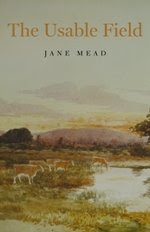The main force is the usable field
or sun on the useless bunchgrass,—alchemy that spells and spells us
just as the weather spells us
and the good earth field. . . .
If the book is engaging in a public conversation at all, it is simply finding a voice in the centuries-old conversation about the quiet, self-effacing power of the lyric poem (“I do not know much/about beauty,” the speaker says, “though//its consequences/are clearly great”) reaffirming the ways in which faithful meditations on the particular have the capacity to echo into the universe, the universal. These are “personal” poems, but they never rely on effusive sentimentality or voyeur-friendly “confessional” narrative. It is the language itself that feels personal, even hermetic, in the most positive—and physical—sense of the word. To me these poems build themselves around the reader in the act of reading, using language to create enclosures—but not defensive walls, by any means—in which to meditate on their beauties and burdens. This is a book that one must visit again and again, each time becoming more a part of the “us” that the alchemy and weather “spells and spells” throughout this quietly extraordinary collection.
The Usable Field is haunted, though the poet presents the dead as so much a part of the place that they seem like natural phenomena (as opposed to supernatural). In the first poem of the collection “The Dead, Leaning (in the Grasses and Beyond the Trenches,—Like Oaks)” Mead begins:
In the high and mighty grasses
the dead lean on the living
like nobody’s business,—they think we are their mission.
Thus the rain, whereby they say
Now wash your eyes and pray.Pray for anything but forgiveness.
Again and again, the dead appear; the speaker tends to them as she tends to the land itself, and to her poems. This burden seems to inform the making of stanzas and lines throughout the book, as “form” and “content” (for lack of better words) feel exhilaratingly inseparable. There is an intuitive sense of cadence and composition throughout, not “form” per se, but a definite formality, calling to mind Dickinson’s “formal feeling” that follows “great pain.” The repetitions and shifts of the natural world (wind, water, seasons) appear as anaphora and incantation, point and counterpoint, caesura and enjambment paired to ensure a reader’s careful navigation of syntactic possibility. The poem “Three Candles and a Bowerbird” seems to speak to the necessity of this kind of “intuitive formality”:
I do not know why
the three candles must sit
before this oval mirror,but they must.—
In this poem, and indeed throughout the collection, Mead uses precise images as touchstones to explore the ineffable; even the most revelatory endings have an elliptical or gnomic quality as in “The Dead, Leaning (in the Grasses and Beyond the Trenches,—Like Oaks)” which ends with the lines: “if there is death between you/and the oak, there is no oak.” These koan-like endings feel like anchors; in their mystery they moor the reader with their declarative and definitive cadence, often pentameter and often iambic, though sometimes folded over two lines. The poem “We Take the Circus to Another Level—” ends “The odds, by definition, can’t conspire”; the poem “Three Candles and a Bowerbird” ends “And in the mirror/also, there is joy”; the poem “Point and Counterpoint in All Things” ends “. . . there is/a single blossom—called commence.”
Although death and grief seem to bind these poems to the land, the land also seems to provide the possibility of release, or at least a coming to terms. The collection ends with the declaration “Also, I am here of my own choosing” — the paradox of finding agency through tending and committing to a place of inherited sadness. The precision and vitality of language and image and thought and feeling throughout these poems reacquaints us with one of the age-old paradoxes of the lyric: the pleasure it gives a reader to linger in and return to a solitary and grievous place made of uncertainty.

